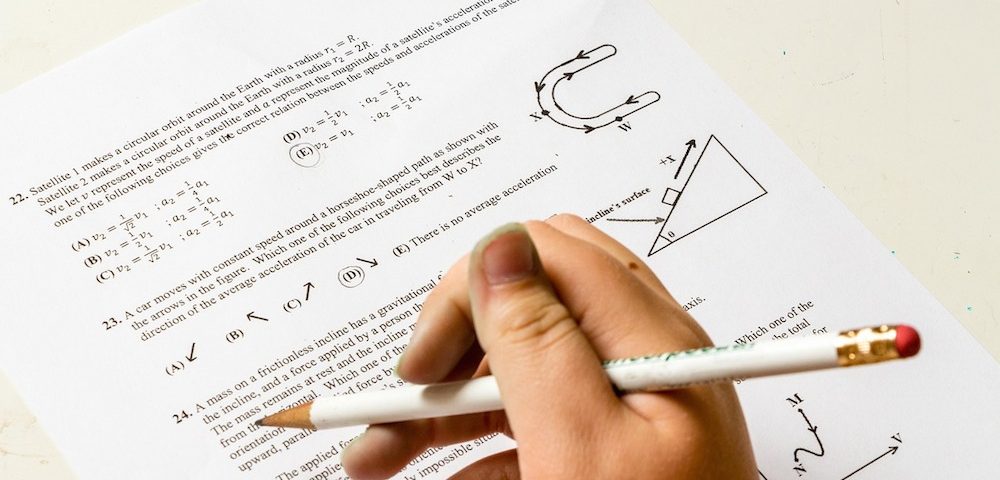10 Formulas to Master for the ACT Math Section

Tips for Tackling the GRE
October 1, 2019
4 Ways You Can Impress College Admissions
October 29, 2019The ACT is an entrance exam that colleges use to gauge your reasoning abilities in English, Science, and Math. Each section contains multiple-choice questions in which test-takers may receive a possible 36 points. The final score comes from calculating the average of each section. While the SATs underwent a format change in 2016, choosing between the two exams isn’t any easier. Nonetheless, the ACTs do allow you to show off your science expertise (assuming that’s your strong suit).
Still, one of the biggest differences between the ACT and SAT is the math section. While the SATs cover the basics of algebra and some problem solving, the ACTs focus on higher levels of math that covers more topics in mathematics. You can use a calculator throughout the whole math section, but that won’t prove helpful if you didn’t memorize the essential math formulas. To help you earn a high score on the ACT math section, try mastering these 10 math formulas.
-
Linear Equation Formula
We can pretty much guarantee that you’ll encounter this equation in the ACT math section. You may even have to rearrange an equation to get it into proper form.
Formula:
Y = mx + b
M = slope
B = Y-intercept
Example Question: 3y+2x+6=0
Solution:
3y=-2x-6
Y=-2/3x-2 the slope is -2/3 and the y-intercept is -2
-
Midpoint Formulas
Sticking with linear formulas, you’ll need to know how to find the midpoint between 2 points.
Formula:
(x1+x2)/2 (y1+y2)/2
Example Question: What is the midpoint between (2,1) and (6,5)
Solution:
(2+6)/2 = 4 (1+5)/2= 3.
Therefore, Midpoint= (4,3)
-
Area of Rectangle
Formula:
Area = Length x Width
Example Question: Calculate the area of a rectangle where Length = 3 and Width = 4
Solution:
3 x 4 = 12, Area = 12
-
Area of a Circle
Formula:
Area = πr2 (π x radius squared)
Example Question: Calculate the area of a circle where Radius =3
Solution:
32= 9. π9 = 28.27.
Therefore Area = 28.27
-
Area of a Parallelogram
Formula:
Area = Base x Height
Example Question: Calculate the area of a parallelogram where Base = 4 Height = 6
Solution:
4 x 6 = 24 | Area = 24
-
Area of a Triangle
Formula:
Area = ½ (Base x Height)
Example Question: Calculate the area of a triangle where Base = 4, and Height = 6
Solution:
4 x 6 = 24 à 1/2 x 24 = 12 | Area = 12
-
Circumference of a Circle
Finding the dimensions of a circle is critical for scoring well on the math section of the ACTs. Regardless of whether or not the question is asking for the circumference as a final answer, or you need to calculate a circle’s circumference as a plug into a different equation, understanding how to use this formula will help you tremendously. Be sure to use the pi button on your calculator to get the most accurate results.
Formula:
Circumference = 2πr
Example Question: Calculate the circumference of a circle where radius = 4
Solution:
2π x 4 = 25.13 | Circumference = 25.13
-
Pythagorean Theorem
There will definitely be questions pertaining to triangles on the ACT. The Pythagorean theorem calculates the unknown side of a right triangle.
Pythagorean theorem formula:
a2 + b2= c2
Example Question: Given two sides of a right triangle where a=2, and b=5, what is the length of the third side?
Solution:
22=4. 52= 25. 25+4= 29 c2=29 c= √29 = 5.39 c=5.39
-
Mean (Average) Formula
To calculate the mean is to find the average value of a given set of numbers. You will need to use this on the ACT, but it is very simple.
Formula:
Mean = (Sum of all values)/(Number of Values)
Example Question: What is the average value of the following set of numbers? 2, 4, 6, 8
Solution:
(2 + 4 + 6 + 8) = 20
20/4 = 5
Mean=5
-
Probability Formula
Probability is the likelihood of a given event occurring. It can be expressed as a percentage, or as a decimal.
Formula:
Probability = (Number of desired outcomes) / (total number of outcomes)
Example Question: A jar contains five blue marbles, five red marbles, and ten white marbles. What is the probability of picking a red marble at random?
Solution:
There are 5 red marbles in a jar filled with 20 marbles. Therefore, the likelihood of picking a red marble is 5 / 20 = .25 or 25%
Use These Math Formulas to Conquer The ACT Math Section
To ensure you earn a fantastic score on the ACT math section, you’ll need to practice using these math formulas until they come to you like second nature. Plug in different numbers, and find additional examples until you fully understand when and how to use these each one. You may even find it helpful to create flashcards just to help memorize the formulas and what they calculate. If you’re looking for more helpful tips on the ACT or other exams, remember to subscribe to our blog.


